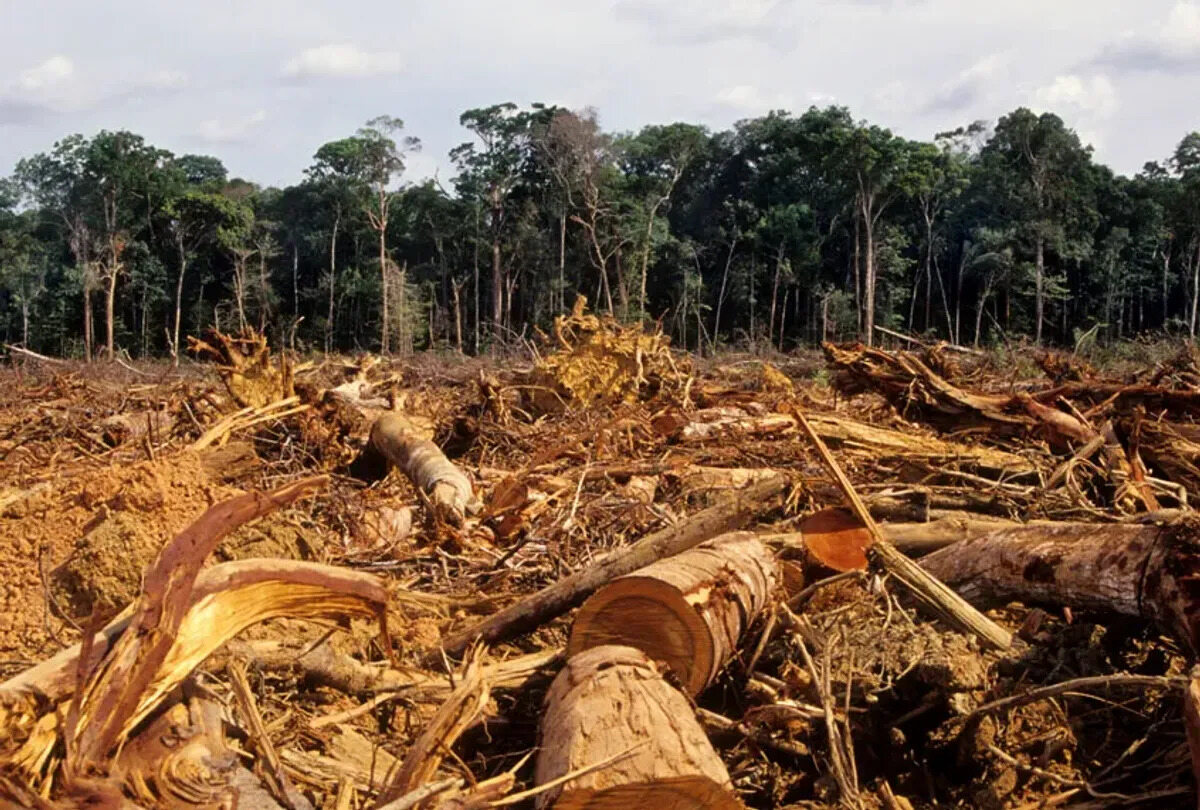
Anthropogenic, derived from the Greek words “anthropos” meaning human and “genos” meaning origin, refers to any environmental phenomena or processes that are caused or influenced by human activity. As we continue to shape and alter our planet, it is crucial to understand the impact we have on the world around us. From climate change to deforestation, anthropogenic factors play a significant role in shaping our environment.
In this article, we will delve into 12 captivating facts about anthropogenic, shedding light on the ways in which human activity has altered ecosystems, affected biodiversity, and transformed landscapes worldwide. From the rise in greenhouse gas emissions to the consequences of industrialization, these facts will not only inform but also inspire us to take action towards more sustainable and responsible practices.
Key Takeaways:
- Human activities like burning fossil fuels and deforestation are causing climate change, pollution, and loss of natural resources, impacting our planet’s health.
- Understanding the consequences of our actions can help us work towards a greener and more environmentally conscious future, promoting sustainable practices for a healthier planet.
Anthropogenic activities are a major contributor to climate change.
From burning fossil fuels to deforestation, human actions significantly contribute to the increase in greenhouse gas emissions and the subsequent rise in global temperatures.
Anthropogenic pollution affects air quality.
Industrial activities, vehicle emissions, and the burning of fossil fuels release harmful pollutants into the air, leading to respiratory problems and other health issues.
Anthropogenic activities have led to the depletion of natural resources.
Through excessive mining, overfishing, and deforestation, human actions have accelerated the depletion of essential resources like minerals, fisheries, and forests.
Anthropogenic factors are causing the loss of biodiversity.
Human activities, such as habitat destruction and the introduction of invasive species, have resulted in the loss of countless plant and animal species, leading to an alarming decline in global biodiversity.
Anthropogenic activities have altered the Earth’s landscapes.
Extensive urbanization, land clearing for agriculture, and mining operations have significantly changed the natural landscapes of many regions, impacting ecosystems and wildlife habitats.
Anthropogenic activities have accelerated the rate of deforestation.
Large-scale commercial logging and clearing of forests for agriculture purposes have contributed to widespread deforestation, leading to the loss of vital carbon sinks and the destruction of habitats.
Anthropogenic factors have increased the occurrence of extreme weather events.
The increase in greenhouse gas emissions has led to more frequent and intense heatwaves, storms, droughts, and floods, causing significant damage to human lives and infrastructure.
Anthropogenic activities have caused ocean acidification.
Excessive carbon dioxide emissions have led to the acidification of the oceans, threatening coral reefs, shellfish populations, and marine ecosystems.
Anthropogenic actions contribute to plastic pollution.
Improper waste management and excessive use of single-use plastics have resulted in massive amounts of plastic waste polluting our oceans, rivers, and landfills.
Anthropogenic activities have altered the nitrogen and phosphorus cycles.
Excessive use of fertilizers in agriculture has disrupted the natural balance of nitrogen and phosphorus cycles, leading to water pollution and the formation of harmful algal blooms.
Anthropogenic actions can lead to the depletion of freshwater resources.
Unsustainable water extraction practices, pollution, and climate change impacts can greatly reduce the availability of freshwater resources, leading to water scarcity in many regions.
Anthropogenic activities have influenced the rapid urbanization of the world.
The growth of cities and urban areas is primarily driven by human activities, resulting in various social, economic, and environmental challenges.
These 12 captivating facts about anthropogenic highlight the significant impact of human actions on our planet. From climate change to pollution and the depletion of natural resources, it is crucial for us to recognize our role in these processes and take steps towards sustainable practices. By understanding the consequences of anthropogenic activities, we can work towards a greener and more environmentally conscious future.
Conclusion
In conclusion, anthropogenic activities have a significant impact on our planet and the environment. These captivating facts shed light on the extent of human influence and the consequences it has on the Earth’s ecosystems.From the alarming rise in carbon dioxide emissions to the depletion of natural resources, anthropogenic activities are reshaping our world in profound ways. It is essential that we recognize the power we hold in shaping our environment and take responsibility for our actions.By implementing sustainable practices, supporting renewable energy sources, and raising awareness about the impact of our actions, we can work towards mitigating the negative effects of anthropogenic activities. It is our collective duty to preserve the planet for future generations and foster a harmonious relationship between human activities and the natural world.
FAQs
1. What does anthropogenic mean?
Anthropogenic refers to the influence or impact that human activities have on the environment or natural ecosystems.
2. What are some examples of anthropogenic activities?
Examples of anthropogenic activities include deforestation, industrial pollution, urbanization, agriculture, and the burning of fossil fuels.
3. How do anthropogenic activities contribute to climate change?
Anthropogenic activities contribute to climate change by releasing greenhouse gases into the atmosphere, such as carbon dioxide from burning fossil fuels. These gases trap heat, leading to a rise in global temperatures and altering weather patterns.
4. What are the consequences of anthropogenic activities?
The consequences of anthropogenic activities include habitat destruction, species extinction, air and water pollution, soil degradation, and the disruption of natural ecosystems. These can have long-term impacts on biodiversity and human well-being.
5. How can we mitigate the negative effects of anthropogenic activities?
We can mitigate the negative effects of anthropogenic activities by adopting sustainable practices, promoting renewable energy sources, practicing responsible consumption and waste management, and raising awareness about the importance of preserving the environment.
6. What is the role of individuals in reducing anthropogenic impact?
Individuals play a crucial role in reducing anthropogenic impact by making conscious choices in their daily lives, such as reducing energy consumption, recycling, supporting eco-friendly products, and advocating for sustainable policies.
7. How can governments address the issue of anthropogenic activities?
Governments can address the issue of anthropogenic activities by implementing and enforcing strict environmental regulations, promoting renewable energy initiatives, investing in sustainable infrastructure, and supporting research and innovation in environmentally friendly technologies.
Was this page helpful?
Our commitment to delivering trustworthy and engaging content is at the heart of what we do. Each fact on our site is contributed by real users like you, bringing a wealth of diverse insights and information. To ensure the highest standards of accuracy and reliability, our dedicated editors meticulously review each submission. This process guarantees that the facts we share are not only fascinating but also credible. Trust in our commitment to quality and authenticity as you explore and learn with us.


